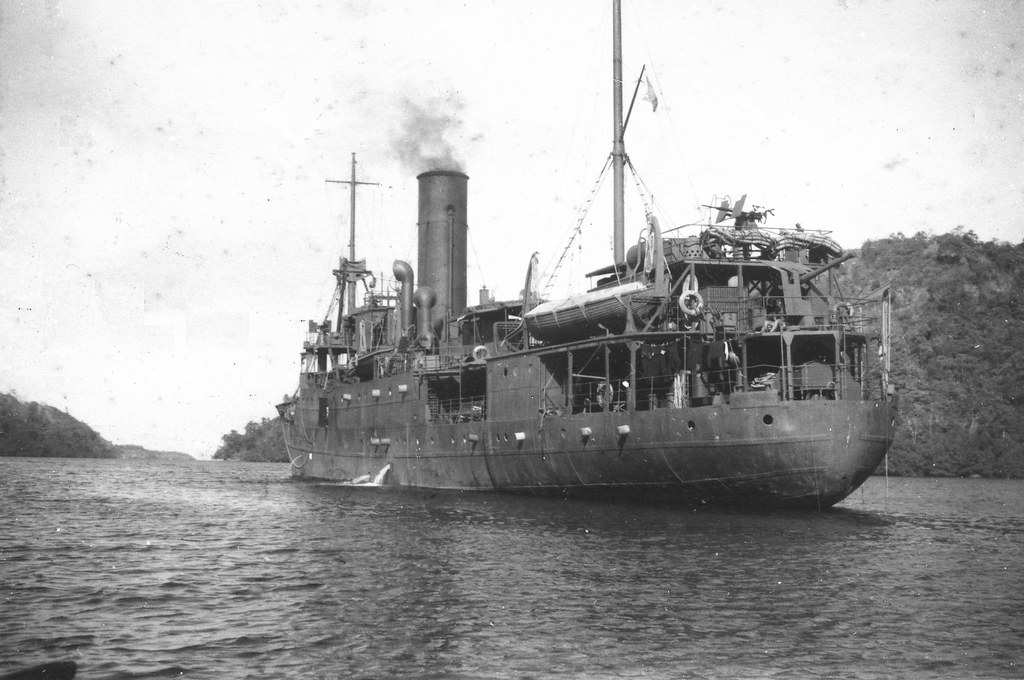Tragic fate befalls Japan’s SS Montevideo Maru in 1942 as it is sunk by an oblivious US submarine, unknowingly carrying over 1,000 prisoners of war.
The wreckage of the SS Montevideo Maru, a Japanese transport ship that was torpedoed and sunk by the USS Sturgeon, a United States submarine, on July 1, 1942, off the coast of the Philippines. The ship was carrying nearly 1,000 Australian prisoners of war at the time, making it Australia’s worst maritime disaster.
The Montevideo Maru was en route from Rabaul, New Guinea, to Hainan, China, when it was attacked. The submarine crew was unaware that the ship was carrying prisoners of war. The sinking of the Montevideo Maru resulted in the deaths of all 979 people on board, including 850 Australian soldiers.

The wreck of the Montevideo Maru was discovered in 2023 by the Silentworld Foundation, a maritime archaeology group. The wreck was found at a depth of more than 4 km (2.5 miles) in the South China Sea. The discovery of the wreck brought some closure to the families of the victims, who had been searching for answers for decades.
The sinking of the Montevideo Maru is a reminder of the sacrifices that were made during World War II. It is also a reminder of the importance of remembering those who lost their lives in conflict.
The discovery of the wreck of the Montevideo Maru is a significant event in Australian history. It is a reminder of the sacrifices that were made during World War II, and it helps to ensure that the victims of the sinking will never be forgotten.
The Montevideo Maru was a Japanese merchant ship that was sunk by an American submarine in July 1942. The ship was carrying Australian prisoners of war and civilians, and the sinking resulted in the deaths of an estimated 1,060 people.
The sinking of the Montevideo Maru was a major tragedy for Australia. It was the worst maritime disaster in the country’s history, and it claimed the lives of hundreds of young men and women. The sinking also had a profound impact on the families of the victims, who were left to grieve for their loved ones without knowing where they were buried.
The discovery of the Montevideo Maru’s wreck in 2023 brought some closure to the families of the victims. It allowed them to finally know where their loved ones were laid to rest, and it gave them a place to mourn and remember. The discovery also served as a reminder of the sacrifices that were made during World War II, and it helped to ensure that the victims of the sinking would never be forgotten.
Prime Minister Anthony Albanese expressed his gratitude to the team that discovered the wreck, and he said that the discovery would help to “bring comfort to the families of the victims.” He also said that the discovery would help to “ensure that the sacrifice of those who lost their lives on the Montevideo Maru will never be forgotten.”
The discovery of the Montevideo Maru’s wreck is a significant event in Australian history. It is a reminder of the sacrifices that were made during World War II, and it helps to ensure that the victims of the sinking will never be forgotten.
As Australia and New Zealand prepare to commemorate Anzac Day on April 25, a day of remembrance for their fallen troops, a significant discovery has been made. Australia’s Defence Minister Richard Marles expressed in a video message that the recent find of the wreckage of the Montevideo Maru marks the end of one of the most tragic chapters in Australia’s maritime history.
For years, the absence of a known location for the Montevideo Maru has left unfinished business for the families of those who lost their lives, Marles added. The search for the wreck began on April 6 in the South China Sea northwest of the Philippines’ main island of Luzon, and just 12 days later, explorers made a positive sighting using advanced technology, including an autonomous underwater vehicle with sonar.
John Mullen, the director of the Silentworld Foundation, which conducted the search in collaboration with Dutch deep-sea survey firm Fugro and assistance from the Australian military, described the discovery as closing a terrible chapter in Australian military and maritime history. Mullen emphasized the significance of the find, stating that over 1,000 people were lost in the tragedy, nearly twice as many Australians as in the entire Vietnam War. The gravesite of the Montevideo Maru holds great importance for families and descendants, he added.
SOURCE: AL JAZEERA


